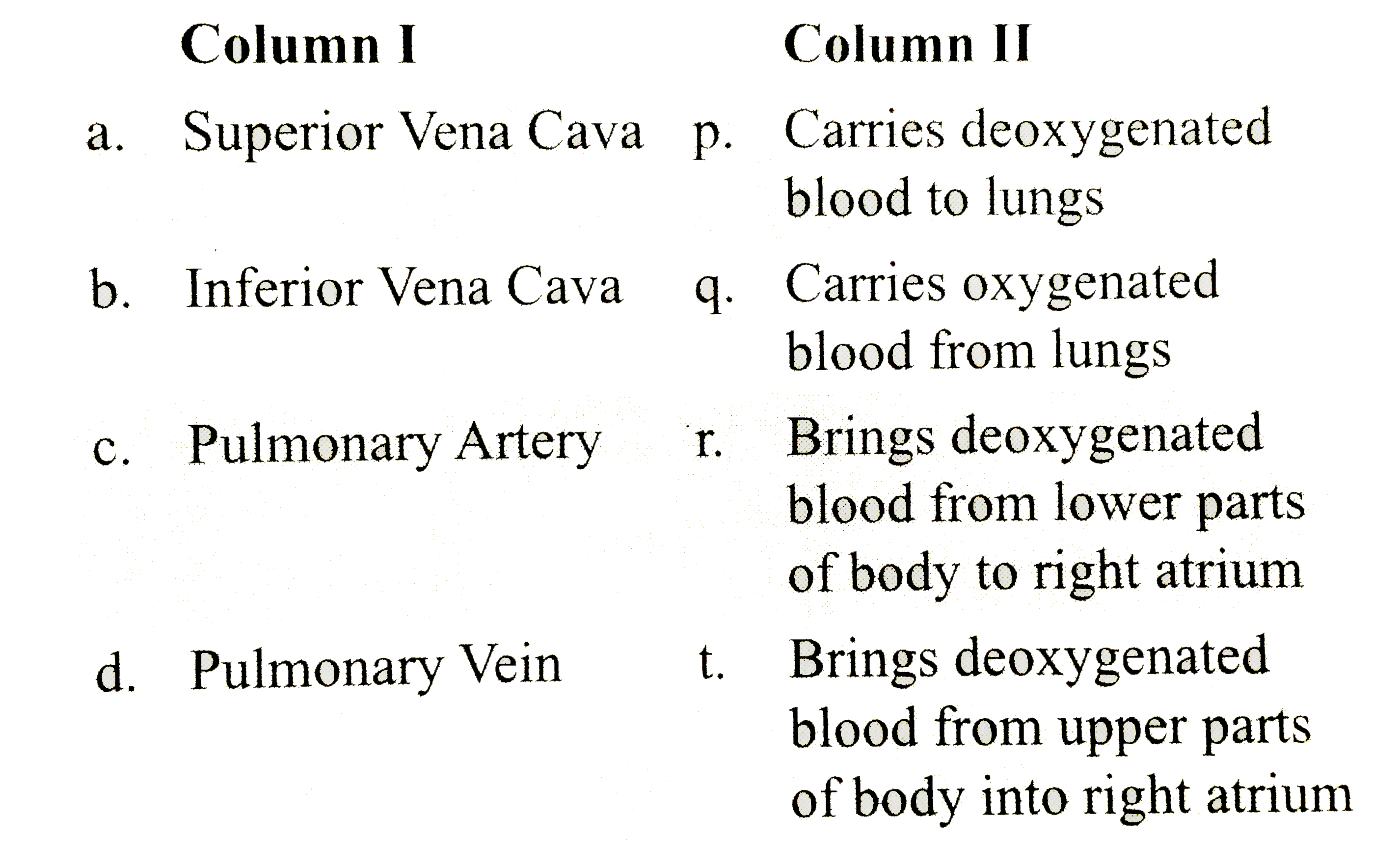Match the columns I and II, ad choose the correct combination from the options given.
Column IColumn II(a)Haplontic life - cycle(i) Gymnosperms and Angiosperms(b)Diplontic life - cycle.(ii) Spirogyra(c)Haplo- diplontic life(iii) Bryophytes and pteridophytes
a - i, b - iii, c - ii
a - iii, b - i, c - ii
a - ii, b - i, c - iii
a - ii, b - iii, c - i
The correct Answer is:C
To solve the matching question between Column I and Column II, we need to understand the life cycles associated with different groups of plants. Let's break down the information step by step.
Step 1: Identify the Life Cycles
1. Haplontic Life Cycle: In this cycle, the dominant phase is the haploid gametophyte. The only diploid stage is the zygote, which undergoes meiosis to produce haploid spores. This life cycle is commonly found in algae.
2. Diplontic Life Cycle: In this cycle, the dominant phase is the diploid sporophyte. The gametophyte is reduced and short-lived. This cycle is characteristic of gymnosperms and angiosperms.
3. Haplo-Diplontic Life Cycle: This cycle includes both haploid and diploid stages. It is seen in bryophytes and pteridophytes, where both gametophyte and sporophyte generations are present.
Step 2: Match with Column II
Now, let's match the life cycles with the corresponding plant groups in Column II:
- (a) Haplontic life cycle: This is matched with (ii) Spirogyra (an example of algae).
- (b) Diplontic life cycle: This is matched with (i) Gymnosperms and Angiosperms (the dominant diploid phase).
- (c) Haplo-Diplontic life cycle: This is matched with (iii) Bryophytes and Pteridophytes (both generations are present).
Step 3: Write the Final Matches
Based on the above analysis, the correct matches are:
- (a) Haplontic life cycle - (ii) Spirogyra
- (b) Diplontic life cycle - (i) Gymnosperms and Angiosperms
- (c) Haplo-Diplontic life cycle - (iii) Bryophytes and Pteridophytes
Conclusion
The correct combination of matches is:
- (a) → (ii)
- (b) → (i)
- (c) → (iii)
1. Haplontic Life Cycle: In this cycle, the dominant phase is the haploid gametophyte. The only diploid stage is the zygote, which undergoes meiosis to produce haploid spores. This life cycle is commonly found in algae.
2. Diplontic Life Cycle: In this cycle, the dominant phase is the diploid sporophyte. The gametophyte is reduced and short-lived. This cycle is characteristic of gymnosperms and angiosperms.
Now, let's match the life cycles with the corresponding plant groups in Column II:
- (b) Diplontic life cycle: This is matched with (i) Gymnosperms and Angiosperms (the dominant diploid phase).
- (c) Haplo-Diplontic life cycle: This is matched with (iii) Bryophytes and Pteridophytes (both generations are present).
Based on the above analysis, the correct matches are:
- (a) Haplontic life cycle - (ii) Spirogyra
- (b) Diplontic life cycle - (i) Gymnosperms and Angiosperms
- (c) Haplo-Diplontic life cycle - (iii) Bryophytes and Pteridophytes
The correct combination of matches is:
- (a) → (ii)
- (b) → (i)
- (c) → (iii)
Topper's Solved these Questions
Similar Questions
Knowledge Check
Match the columns I and II, and choose the correct combination from the options given.
 Aa-1,b-2,c-3Ba-3,b-2,c-1Ca-2,b-1,c-3Da-1,b-3,c-2
Aa-1,b-2,c-3Ba-3,b-2,c-1Ca-2,b-1,c-3Da-1,b-3,c-2Match the columns I and II, and choose the correct combination from the options given.
 Ai-d,ii-c,iii-e,iv-b,v-aBi-e,ii-d,iii-b,iv-a,v-cCi-d,ii-e,iii-b,iv-a,v-cDi-e,ii-c,iii-b,iv-a,v-d
Ai-d,ii-c,iii-e,iv-b,v-aBi-e,ii-d,iii-b,iv-a,v-cCi-d,ii-e,iii-b,iv-a,v-cDi-e,ii-c,iii-b,iv-a,v-dMatch the columns I and II and choose the correct combination from the options given.
 Aa-3,b-5,c-4,d-2,e-1Ba-6,b-4,c-3,d-2,e-1Ca-3,b-5,c-4,d-1,e-2Da-2,b-5,c-4,d-3,e-6
Aa-3,b-5,c-4,d-2,e-1Ba-6,b-4,c-3,d-2,e-1Ca-3,b-5,c-4,d-1,e-2Da-2,b-5,c-4,d-3,e-6
Match the columns I and II and choose the correct combination from the options given.


View SolutionMatch the columns I and II, and choose the correct combination from the option given.

View SolutionMatch the column I and II, and choose the correct combination from the options given

View SolutionMatch the columns I and II, and choose the correct combination from the options given

View SolutionMatch the column I and II, and choose the correct combination from the options given.

View Solution


